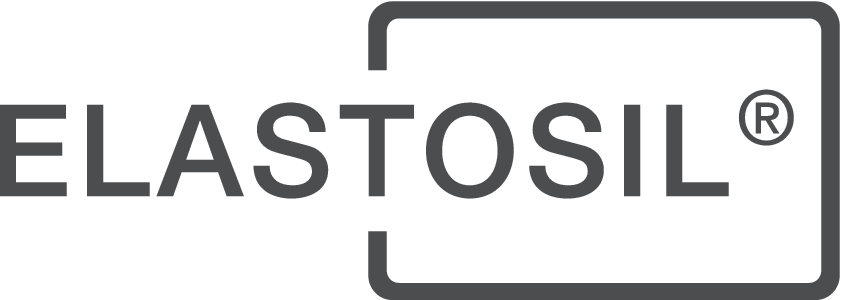ELASTOSIL® 5000

ELASTOSIL® 5000 is a one-component, acid-curing, low-modulus silicone sealant with outstanding adhesion, long shelf life and very good processing properties for construction and industrial applications.
ELASTOSIL® 5000 cures at room temperature in the presence of atmospheric moisture to give a permanently flexible silicone rubber.
Properties
- solventfree
- non-sag
- ready gunnability at low (+ 5 °C) and high (+ 40 °C) temperatures
- low shrinkage on curing
- flexible at low (-40 °C) and high temperatures (+160 °C)
- low-modulus: better adhesion and higher safety
- rapid crosslinking: quickly becomes tack-free
- adheres excellently to glass, vitrified surfaces, ceramic tiles, selected plastics and most coatings
- excellent tooling properties
- long shelf life
Specific features of ELASTOSIL® 5000
- Acetoxy-cure
Application fields
- Sealing of joints between glazing and supporting structure (frame, transoms, mullions) in inside- an outside areas
- Glass sealing
- Expansionjoints in inside- and outside areas
Processing:
The substrate areas that will be in contact with the sealant must be clean, dry and free of all loose material such as dust, dirt, rust, oil and other contaminants. Non-porous substrates should be cleaned with a solvent and a clean, lint-free, cotton cloth. Remove residual solvent before it evaporates with a fresh clean, dry cloth.
Certification
ELASTOSIL® 5000 is certified and classified according to
- ISO 11600 G - Class 25 LM
- EN 15651-1 - Class 25 LM F-INT-EXT-CC
- EN 15651-2 - Class 25 LM G-CC
- BS 15651-1 - Class 25 LM F-INT-EXT-CC
- BS 15651-2 - Class 25 LM G-CC
- DIN 18545-2 - Class E
- ASTM C920: Type S, Grade NS, Class 35
- EMICODE EC-1 PLUS
Adhesion
ELASTOSIL® 5000 exhibits excellent primerless adhesion to most non-porous siliceous material, e.g. glass, tiles, ceramics, enamel, glazed tiles and clinker Users must carry out their own tests due to the great variety of substances. The adhesion can be improved in many cases by pretreatment of the substrates with a primer. If adhesion difficulties arise please contact our technical service.
Restrictions on use
It is the user's responsibility to test the compatibility of the sealant with the adjoining materials. Incompatible substances like coating materials (paints, varnishes and glazes) or organic plasticizer containing rubbers (EPDM, butyl and neoprene) can lead to discoloration or other impairments like loss of adhesion of the sealant. Materials in direct contact with the applied sealant like cleaning agents and materials in indirect contact like gaseous emissions can damage the sealant in its function or change its appearance. Because of the multitude of these materials. Wacker cannot make a general statement to the compatibility of materials with the sealant. In case of doubt the user shall conduct appropriate preliminary tests.
ELASTOSIL® 5000 must not be used for insulating glass applications.
ELASTOSIL® 5000 should not be used on substrates such as marble, concrete, fibrous cement and mortar, as the product releases acetic acid during vulcanization.
ELASTOSIL® 5000 should not be used in contact with metals such as lead, copper, brass or zinc due to corrosion. ELASTOSIL® 5000 may be discolored in contact with some organic elastomers, e.g. EPDM, APTK and neoprene. ELASTOSIL® 5000 should not be used for sealing of aquaria.
ELASTOSIL® 5000 is not recommended for use on natural stone, such as marble, granite, quartzite, as it can cause staining. ELASTOSIL® 5000 is not recommended for structural glazing bonding.
ELASTOSIL® 5000 should not be used in contact with metals such as lead, copper, brass or zinc due to corrosion.
ELASTOSIL® 5000 is not recommended for sealing of aquaria or for longer-term use under water.
ELASTOSIL® 5000 is not suitable for food grade applications where the joints are likely to come in contact with food.
ELASTOSIL® 5000 is not suitable for use as a mirror adhesive.
The time until complete curing may be extended at lower temperature, lower humidity, increasing film thickness or by low volume of air exchange.
The use of tooling agents should be avoided if possible. Otherwise, water or a diluted solution of a little neutral soap or alcohol in water should be sparingly applied.
Storage
Sales and support
Ann Arbor, MI 48108
United States
How can we help you?
- Do you need help in choosing a product or do you require technical support? If so, please contact our experts.
More products
Please choose an application for viewing your product matches.



